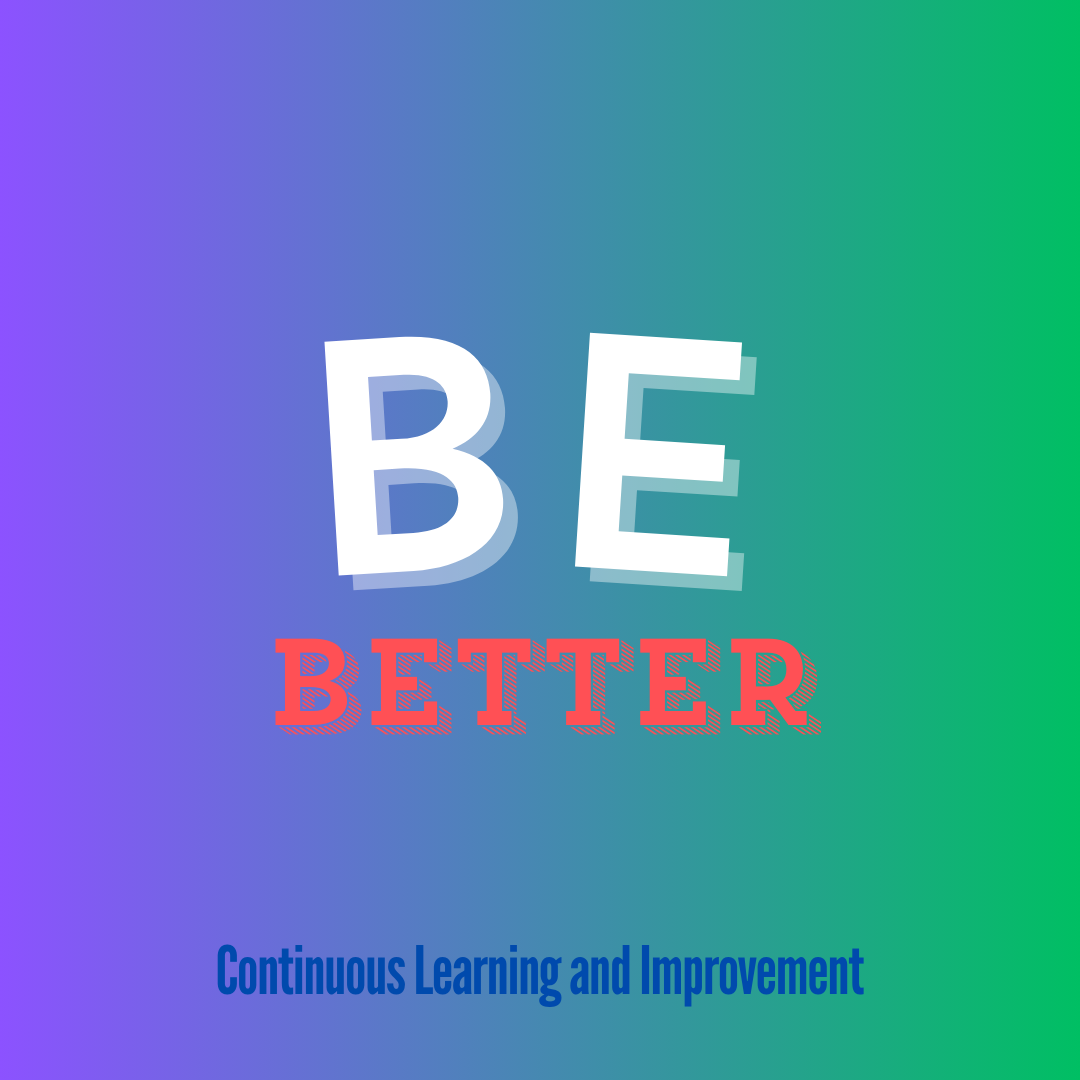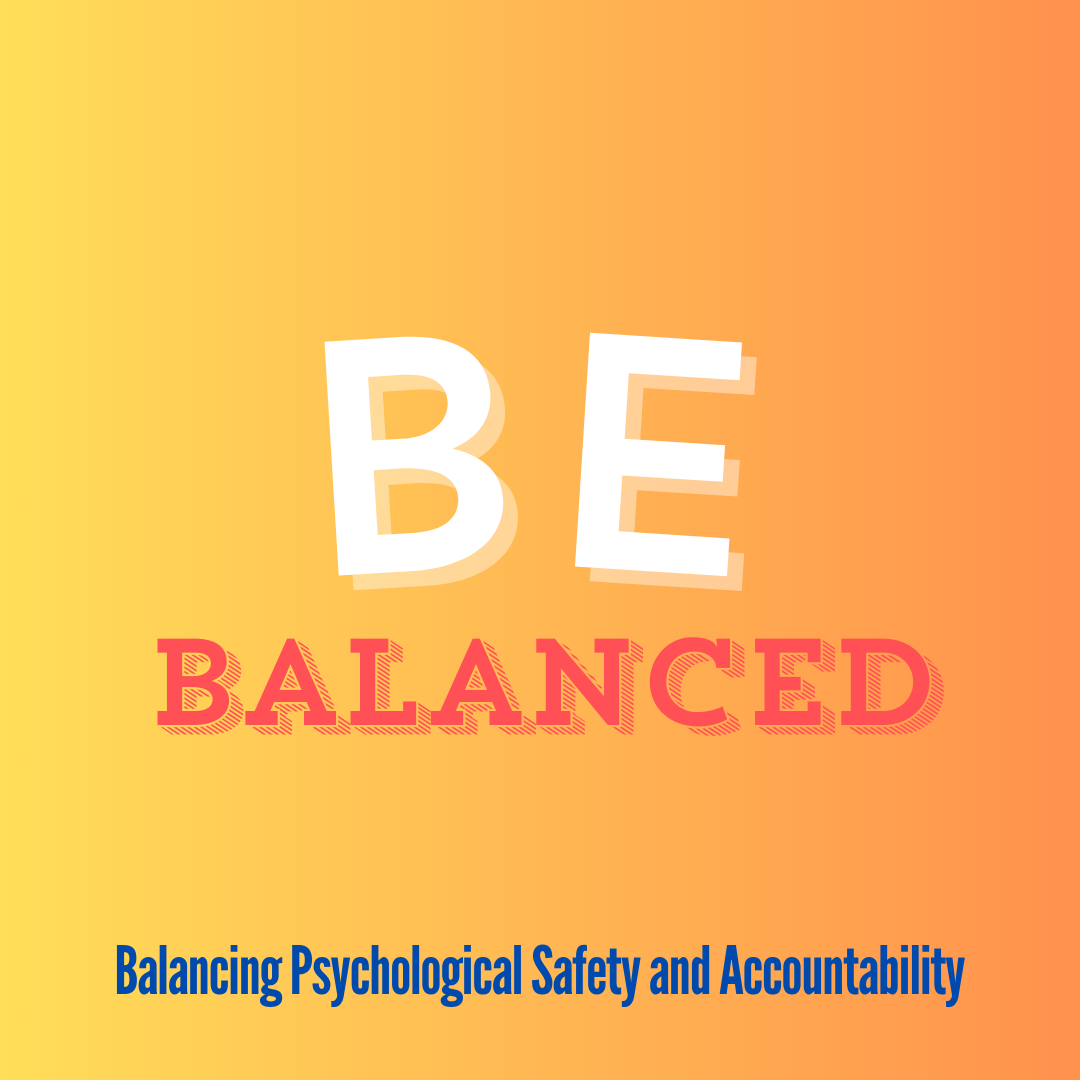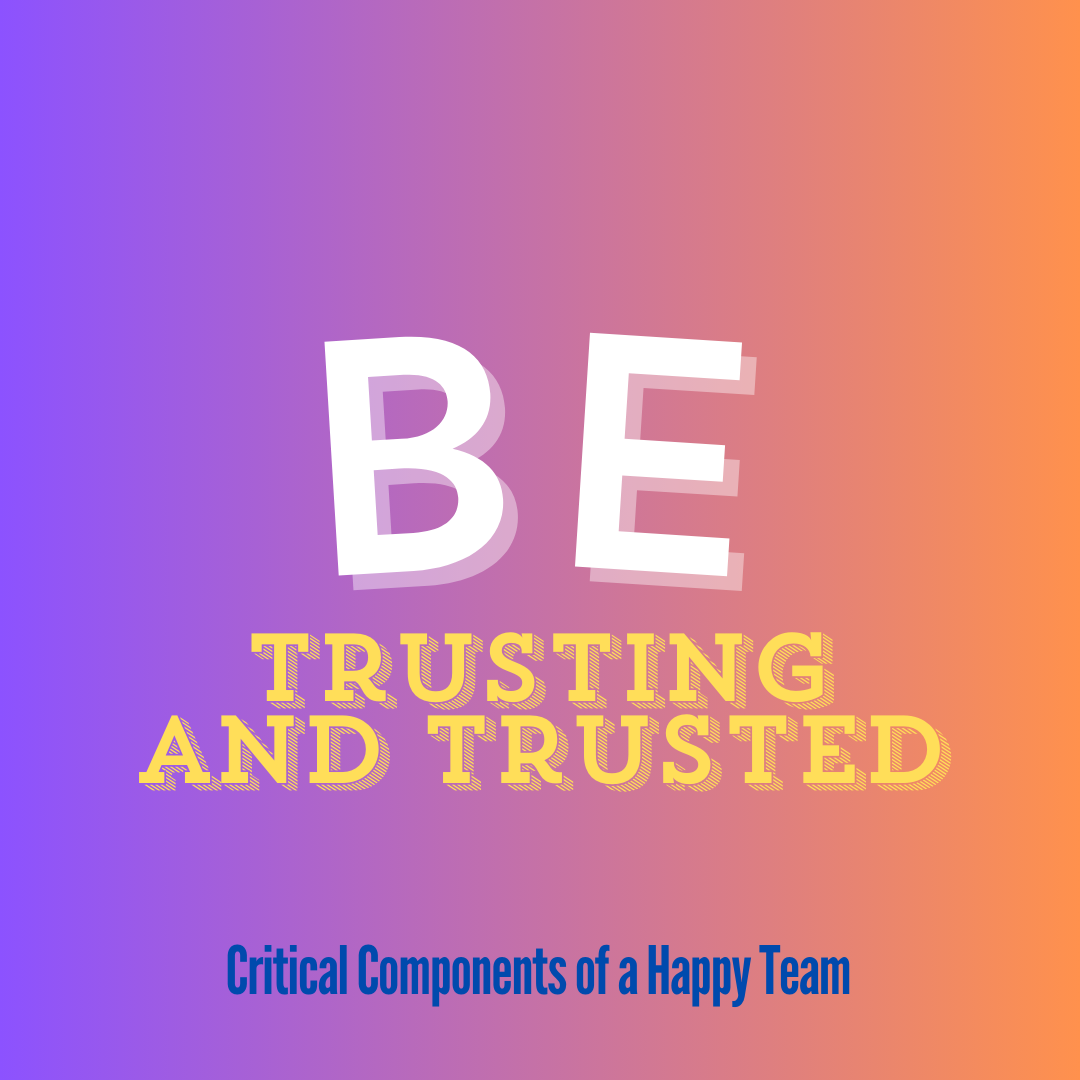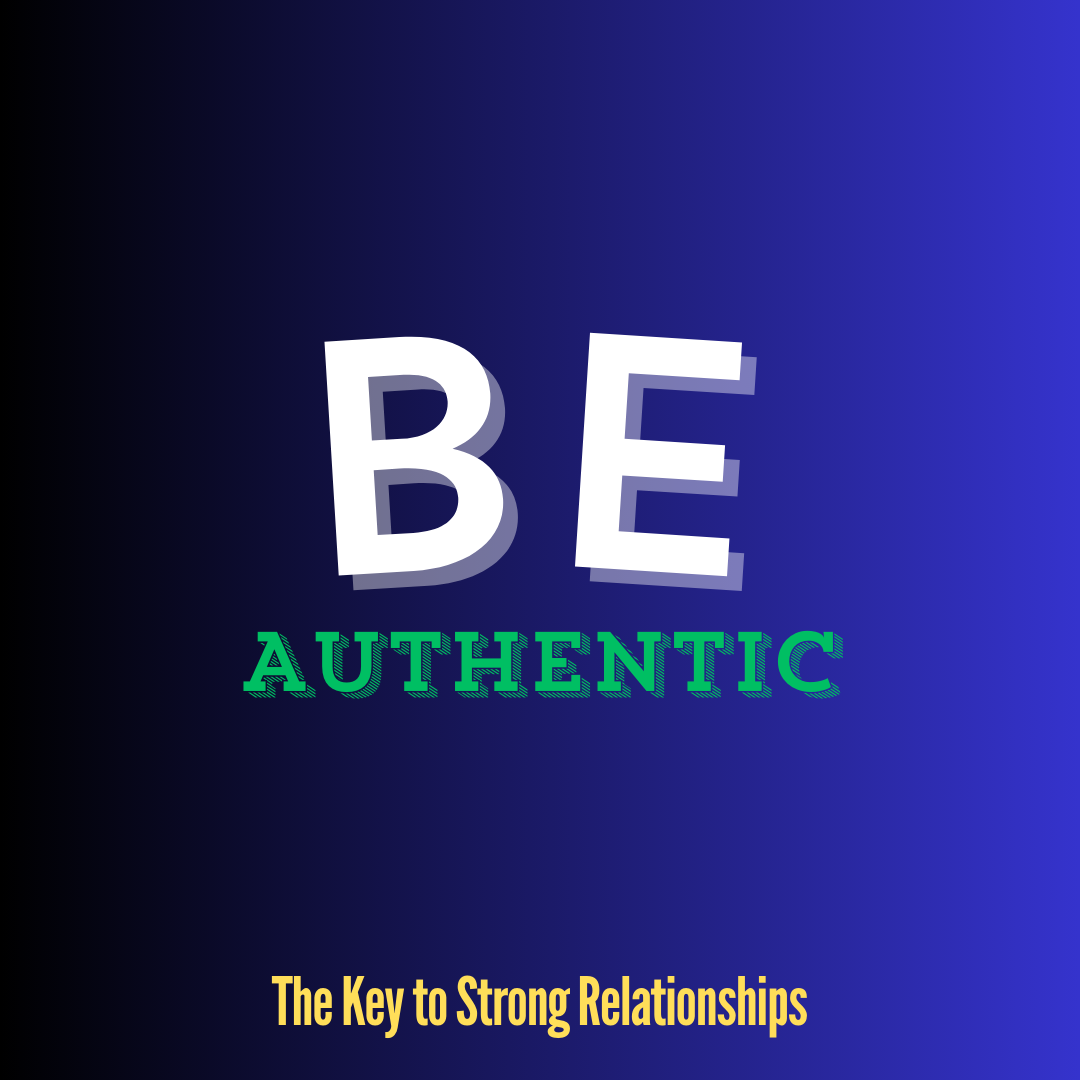Richard Dahl
MY “BE’S OF LEADERSHIP”

BE BETTER
Continuous Improvement
Leadership isn't about being perfect; it's about continuously striving to be better, for yourself and for your team. As Albert Einstein said, 'The measure of intelligence is the ability to change.' Create a culture of continuous learning and improvement, where every challenge becomes an opportunity for growth and positive change.
As a leader, it's crucial to cultivate an environment where continuous learning and improvement are fundamental expectations. While the responsibility for learning and growth lies with the individual, empowering them to take ownership of their development journey and providing opportunity for growth is a hallmark of a good leader.
Engage with your team members about their learning journeys. Encourage open dialogue about what they are learning and find ways for individual growth and learning to spread wider to teams and departments fostering a dynamic environment of innovation and skill development.

BE BALANCED
Balancing Psychological Safety and Accountability
A great leader strikes a delicate balance between psychological safety and accountability. As Simon Sinek puts it, 'Leadership is not about being in charge. It's about taking care of those in your charge.' Foster an environment where team members feel safe to take risks while also being held accountable for their actions, creating a culture of trust and responsibility.
I have experienced contrasting organizational cultures firsthand. In environments characterized by command and control, trust is absent, and fear stifles innovation. On the other end of the spectrum, I have encountered cultures where the non-punitive aspects of a psychologically safe environment transition to no accountability leaving teams to tolerate and work around individuals who choose to do little work, produce work of poor quality, or no work at all, resulting in stifled innovation and a sinking team morale.
Achieving a balance between psychological safety and accountability is essential. When these elements are effectively coupled you will have trust, collaboration, innovation, and individual well-being leading to higher employee engagement, creativity, and productivity.

BE A CHAMELEON
Idealistic Leadership vs. Pragmatic Leadership
When I say Chameleon, I’m not suggesting as a leader that you should try to blend in and hide. That’s not the lesson we can learn from the Chameleon. I’m suggesting that you need to learn to adapt, and to adapt quickly. Adapt your leadership in the moment to the current situation.
As a leader you need to bring out the appropriate dimensions of leadership for the work at hand. Leadership is not one size fits all, and without intent you can end up bringing your comfortable tools to every situation and end up applying a square peg to a round hole.
In my role as an engineering leader, I have the pleasure of working with two fantastic teams: my vertical team and my horizontal team. My vertical team is where the rubber meets the road. This crew of engineers and leaders are the builders, the doers, the ones turning vision into reality. Here, pragmatic leadership is key. We're focused on the journey from where we are to where we need to be, solving problems with data-driven decisions and clear, direct communication. We thrive on practicality and results, ensuring our strategies are not only feasible but also executed flawlessly.
On the flip side, my horizontal team is where we dream big. This group consists of my peers in product management, support, training, sales, marketing, and other operational groups. We collaborate on the vision of our product. Together, we set bold goals and chase daring initiatives. Here, I switch to idealistic leadership, where creativity and long-term vision take the front seat. We brainstorm and innovate, painting a picture of where we want to go with our products.
While this analogy of my vertical and horizontal teams is stated in binary, suggesting that I bring one set of skills to each team, the reality is working with my teams is nuanced, situational, and requires a blend of these leadership styles. A good leader knows how to recognize the environment and adapt depending on the team and the topic at hand. You can’t simply be one type of leader all the time. Balancing the attributes of pragmatic and idealistic leadership is essential.

BE TRUSTING AND TRUSTED
Critical Components of a Happy Team
A recent Watson Wyatt study shows that companies with high employee trust levels outperform those with low trust levels by 186%.
Bi-directional trust is essential for a successful organization. In my daily work, this means trusting my team members to do the right things in the right way at the right time. If you have this trust, you are fortunate; if you don't, you need to cultivate it. It also means that I need to operate in a way that builds and maintains trust.
Building and maintaining this culture of trust requires focused effort on: Accountability, Consistency, Reliability, Transparency, Honesty, Open Communication, Empathy, Understanding, Respect.
These actions establish the foundation for a bi-directional trust-based culture.
Bi-directional trust in the workplace brings substantial benefits, fostering a healthier and more productive environment. When leaders trust their employees, it empowers them to take ownership of their tasks and make critical decisions, leading to higher engagement, improved performance, and greater innovation.
Employees who feel trusted are more likely to be satisfied with their jobs and remain loyal to the company. And, when employees trust their leaders, it creates a collaborative atmosphere where open communication and mutual respect thrive. This reciprocal trust enhances team bonds, reduces stress, and promotes a culture of accountability and transparency, ultimately driving the organization toward greater success.

BE IN THE DETAILS
Avoid the Extremes of Blind Trust and Micromanagement
We touched on bi-directional trust in previous section and how it’s an essential part of a healthy team dynamic. This week my thoughts will extend that conversation into the need to be in the details of what your team is doing. As a leader you need to be informed while letting your team do what they do best. It’s essential to do this in a way that doesn’t erode the trust culture you have.
Lydell Stokes said it well in his article, 'The Importance of Trust in the Workplace': “At the core of it, your employees know their roles best. That’s why they are employed in the professional role they have. Rather than dismissing their expertise, it’s the role of a leader to get in the trenches with them, understand the issues and trust the team to come up with a collaborative solution. Leaders can’t have collaboration and complete control.
Complete control or micromanaging kills collaboration, morale, and innovation, resulting in disengaged, unhappy team members. On the flip side, blind trust introduces risk, as Warren Buffett reminds us, 'Risk comes from not knowing what you're doing.'
As a leader, it's critical to avoid the extremes of blind trust and complete control. Delve into the details, gather firsthand information, and make collaborative, informed, data-driven decisions with your team. By eliminating emotion and promoting pragmatic conversations, you pave the way for informed choices and effective outcomes. This ensures your team members can fulfill their roles with satisfaction while you mitigate risk.
Gathering the details—metrics, data, and situational awareness—takes time and effort, but it’s worth it. Building a culture of trust and open communication allows information to flow more easily. Reward this behavior and avoid weaponizing information or using it punitively, as this will erode trust.
Being in the details is about being informed, not about taking control. If you disagree with something a team is doing, don’t dictate commands expecting to drive your desired outcome. Instead, have a conversation. Listen, learn, discuss, and work together on the best course of action.

BE PRESENT AND ACCESSIBLE
Don't Skimp on Relationships
Being a present and accessible leader is key to building strong relationships. As Maya Angelou wisely said, "People will forget what you said, people will forget what you did, but people will never forget how you made them feel." Practicing active listening, showing genuine interest, and being available for your team fosters an atmosphere of trust, collaboration, and meaningful job satisfaction.
Reflecting on the leaders who have had a profound impact on my career, those who helped me learn, grow, and achieve success coupled with high job satisfaction were the ones who built real connections with me. They are genuinely interested in me, my work, and my personal life. Their presence was not exploitative; they cared about both the work getting done and me as a person. These leaders were present, accessible, and offered encouragement, support, and praise as needed. The deep, collaborative connection we shared was a foundation for mutual respect, trust, and success.
As a leader, you can't skimp on relationships. We're all busy, that’s a given, but don’t let busyness be a barrier to building meaningful relationships. Actively taking the time to know your team and making the effort to be present and accessible for them will enhance their careers and lives, as well as your own. It’s a win-win!!!

BE CURIOUS AND COLLABORATIVE
The Seeds of Innovation
Linus Pauling, a world-renowned scientist, educator, and peace activist, once said, “The best way to have a good idea is to have a lot of ideas.” A leader who regularly asks “what if…” and “I wonder…” questions with their teams will find themselves engaged in highly collaborative and innovative conversations that result in "good ideas". Curiosity and collaboration fuels innovation, and innovation drives success. Tackling problems through the lens of curiosity often leads to better solutions.
Encourage curiosity by asking insightful questions and waiting for answers, setting the stage for collaborative problem-solving. As Ken Blanchard wisely stated, “None of us is as smart as all of us.” As a leader, speaking your opinions too soon can stifle creative flow and direct your team to suboptimal solutions.
Embrace diverse perspectives, as true innovation often arises from collective creativity. Build a culture where curiosity is recognized, and innovation is celebrated.

BE TRANSPARENT
The Foundation of Trust
As an engineering leader, I have found that prioritizing transparency is essential for fostering trust within my team. While confidentiality requirements may limit the information I can share and not all information needs to be broadcast, leveraging transparency whenever possible is a powerful tool for building trust. By being open and honest about goals, challenges, and decisions, I create an environment where team members feel valued and respected, ultimately driving greater collaboration and success.
Transparency is a cornerstone of effective leadership. Paul Polman, a widely regarded visionary leader who emphasizes the importance of ethical and transparent business practices, said, “Leadership is not just about giving energy… it’s unleashing other people’s energy with transparency.” Unleash your team’s energy by being honest, open, and clear with data, details, and the purpose behind decisions, fostering trust and alignment within your team.
Transparent leadership leads to better solutions and a shared sense of purpose.
Transparency is at the core of high-trust relationships and the heart of building a constructive, high-performing culture. As leaders, our goal is to build the abilities of our team to meet and exceed business goals, maximizing ROI and customer value.
Take care not to overshare, cluttering efficient channels of communication with wasteful chatter. Evaluate the merits of the situation to determine the appropriate degree of transparency to share.

BE AUTHENTIC
The Key to Strong Relationships
Many of my Be’s of Leadership we’ve discussed so far have direct or tangential relationships as they weave together into the fabric of leadership, and authenticity is no exception. Authenticity is closely linked with trust and employee job satisfaction, which leads to innovation, individual growth, and strong relationships.
So, what does it mean to be an authentic leader? There's a wealth of content on this topic. Here's a perspective from the Harvard Business Review:
“Employees' perception of authentic leadership serves as the strongest predictor of job satisfaction and positively impacts work-related attitudes and happiness.”
The Harvard Business Review outlines the characteristics of authentic leaders as follows:
- They’re Committed to Bettering Themselves
- They Cultivate Self-Awareness
- They’re Disciplined
- They’re Mission-Driven
- They Inspire Faith
These things are great, but I believe there’s more to this topic. Something central that’s missing. While this list highlights how to become an authentic leader and the outcomes of being one, it doesn’t capture the essence of authenticity.
Mahatma Gandhi said, 'Your beliefs become your thoughts, your thoughts become your words, your words become your actions, your actions become your habits, your habits become your values, your values become your destiny.'
To me, authenticity means being true to your values, seeing the humanity in each relationship first, beyond the other labels we all apply as we filter the environment around us, and being consistent, not only with your team members but with yourself in our interactions. This foundation in authenticity allows you to build strong relationships and engenders trust.
To become an authentic leader, one of the easiest steps is to find a workplace that shares your values. This simple yet often overlooked aspect of job searching can significantly enhance your ability to be an authentic leader. A workplace culture that aligns with your values enables you to be your true self.
When you are comfortable with who you are, and you know what your strengths are and what your gaps are, you can lead without faking it, which is rewarding. Dealing with imposter syndrome is exhausting. I think there’s some of that baggage that we all carry around to varying degrees. The tools described above, bettering yourself and self-awareness, can help you overcome that inner imposter, ultimately enhancing your authenticity and relationships.
As a leader, our “destiny” is to build strong teams and accomplish key strategic outcomes for our employer. Being authentic as we lead, focusing on building strong relationships, makes this journey so much more than just work.